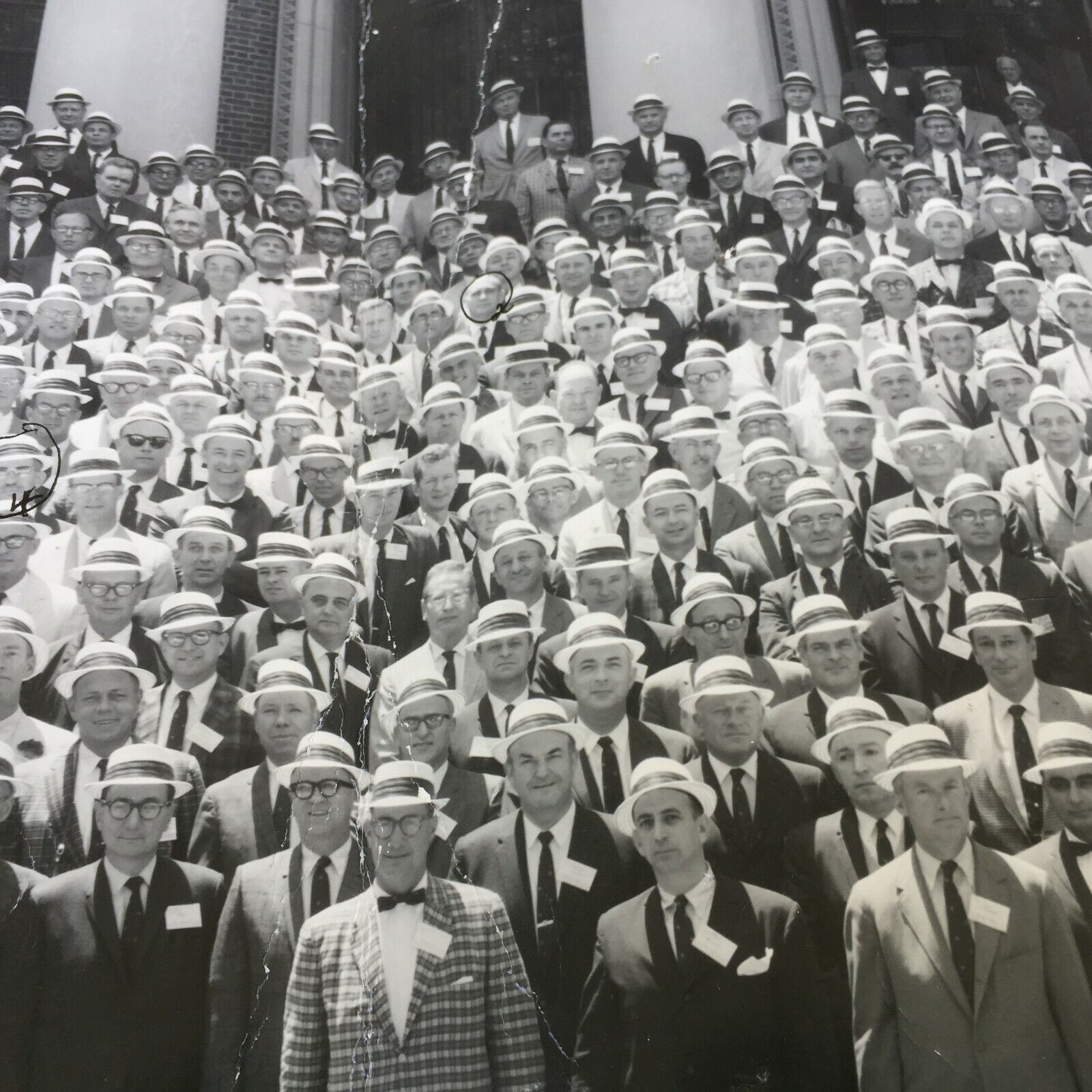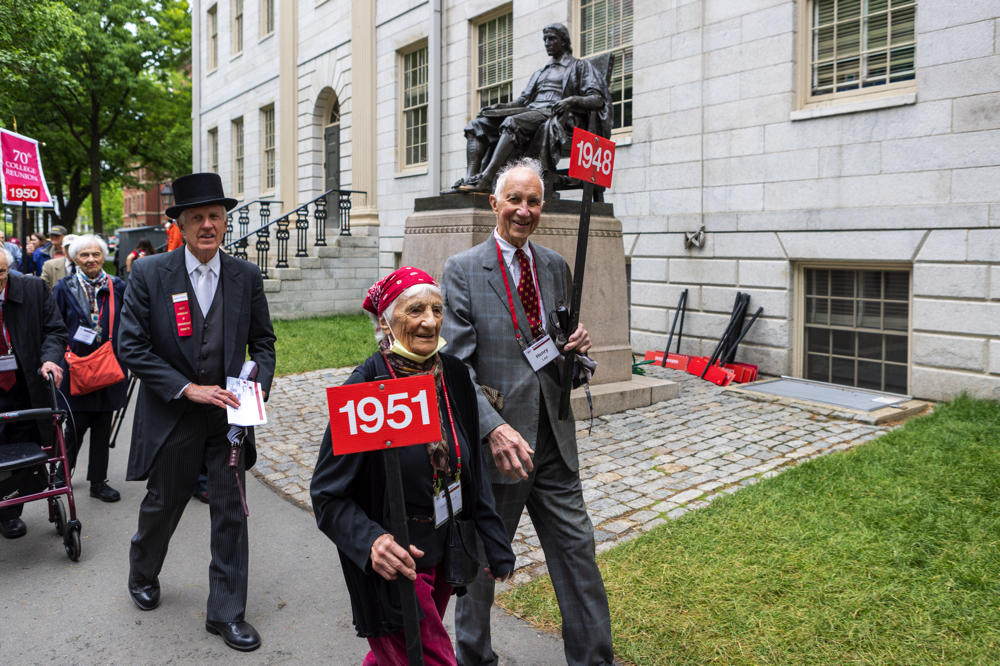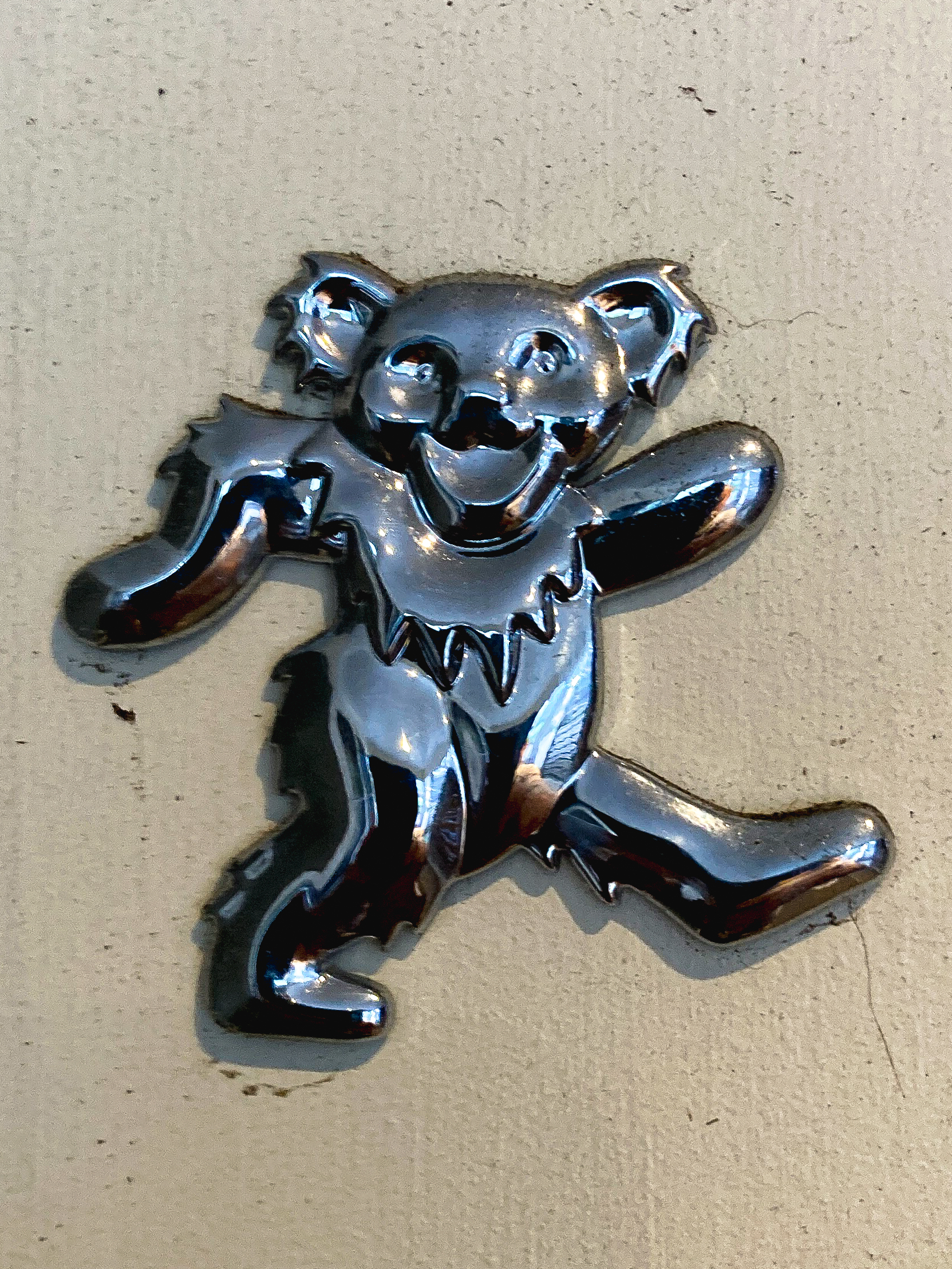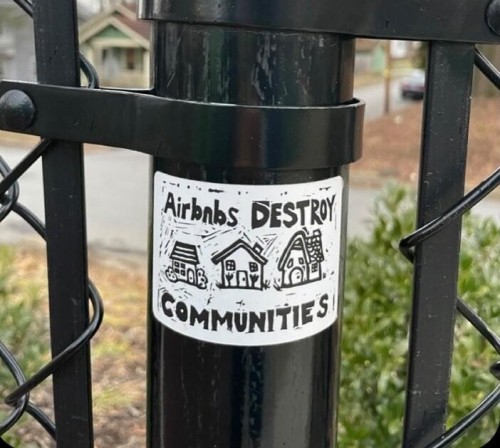John's Question:
What does community mean for us?
Do we have one, and if so, what does it consist of?
Is it important for us?
How do we build and/or find community?
John's Question:
What does community mean for us?
Do we have one, and if so, what does it consist of?
Is it important for us?
How do we build and/or find community?
Once again, a vast playground for me, a professional/trained looker-in at OTHER people's communities, though my practice of that voyeuristic activity has been off-again on-again; and I'm not much of a participant with others who see themselves as Actors in that community [the Anthropologists]. Few of them would take any notice of me, or think to include me in their Reindeer Games, and
I triangulate the territory within which community is to be found with two more quoted bits:
and
K. Vonnegut's notions of karass and granfalloon:
a karass is "a group of people linked in a cosmically significant manner";
a granfalloon is "a false karass — people who imagine they have a connection
that does not in fact exist"
and
wampeter: "the central theme or purpose of a karass.
each karass has two wampeters at any given time,
one waxing and one waning."
(from the Wikipedia page for Cat's Cradle [1963])
My own sense of 'community' (a concept I have long harbored ambivalence about) includes
(a pretty restricted subset of Humanity)
I've been on the fringes of various Communities defined by others, but rarely in or near their centers; my preferred position is peripheral and my participation has often been half-hearted and tentative. I'm not clubbable, generally. Just why I've chosen this mode is ...complicated, and not particularly defensible, but as I've remarked before, I stand with Popeye: I yam what I yam. I remain an Outsider by profession, and I'm practiced at avoiding belonging, and prefer enacting The Cat Who Walks Alone (and all places are alike to me, as R. Kipling puts it in a Just So Story). But that's another tale.
Still, the professional/trained looker-in has a lot to say about the concept of community, and how such human entities do be, and what you see if you're looking at them. The primary research method of Anthropology back in the day was based on the fieldworker as "participant observer", in which role (as part of the checkered post-colonial legacy of Anthropology as a discipline) one could all too easily descend into spying or deceptions of many sorts, viz. about the qui bono? of the participant observer's presence.
It's always worthwhile to begin with a typology, to sort out the varieties and senses of the phenomenon explored. While all communities are gatherations of individual persons (or, in the ecological sense, of living beings, plant and animal) in some sort of interaction, I'll be exploring these variants, which overlap and interdigitate:
All communities larger than primordial villages of face-to-face contact (and perhaps even those) are imagined. Communities are to be distinguished, not by their falsity/genuineness, but by the style with which they are imagined. (pg 15)


2022 Alumni Procession
A few generalizations about community:
There are lots of things one might STUDY in these areas, if studying is a thing you do. It occurs to me that I have ALWAYS been studying such things. It's what I expected my students to want to do, and was disappointed that many didn't want to play.
A central factor in community is that members recognize and share in shibboleths that signal, embody, and mark membership:

Consider the example of Deadheads, a self-identified and self-selected Tribe who flourished from the early 1970s, following (even literally) the Grateful Dead, taping and sharing concerts (see archive.org for a vast crowd-sourced archive of Dead concerts, and dead.net for the primary Deadhead website). Deadheads will remember that Jerry Garcia died in 1995...
Among those who have claimed membership in this community are...
Steve Bannon, Ann Coulter, Walter Cronkite, Elvis Costello, Bill Clinton, Barack Obama, John Belushi, Whoopi Goldberg, Bill Weld, Larry Page, Al Gore, Tipper Gore, Steve Jobs, George RR Martin, Nancy Pelosi...which just goes to show... but here's a shibboleth that would be recognized by all of the above:

Or consider that Trumpists form a community, with interesting distributions within the general population. Note HOW they identify themselves to each other and to the world at large via displays of membership: flags, signs, bumper stickers... A walk on Glenmere Road is instructive.
Once you start paying attention for instances (and facets) of 'community', all sorts of things show up. This one rolled in recently, and is worth unpacking:

The history of minority displacement in American cities is long and horrible, and arrives wrapped in such euphemisms as "Urban Renewal". Think of the Tulsa riot of 1921, the miserable histories of St. Louis (and read Walter Johnson's The Broken Heart of America: St. Louis and the Violent History of the United States, maps by Kate) and Los Angeles (John Laslett's Shameful Victory: The Los Angeles Dodgers, the Red Scare, and the Hidden History of Chavez Ravine), and Boston (Seth Bruggeman's Lost on the Freedom Trail: The National Park Service and Urban Renewal in Postwar Boston, again with Kate's maps), and it would be worthwhile to revisit Jane Jacobs' The Death and Life of Great American Cities.
Can (and do) you belong to communities you're unaware of? We seem to make the tacit assumption that communities are voluntary associations, but it's easy to find examples of community-like social groupings that are manufactured and manipulated without the knowledge of their members. We all belong to "audience segments" in a "distributed surveillance economy" (see Oddly specific ad profiles at the FlowingData blog, which points to From "Heavy Purchasers" of Pregnancy Tests to the Depression-Prone: We Found 650,000 Ways Advertisers Label You at The Markup), and the granularity ("the scale or level of detail present in a set of data or other phenomenon" in marketing analysis jargon) achieved by interwebs agencies is jaw-droppingly fine. Such ghost communities as "Affluent Millennials" and "Dunkin Donuts Visitors" and "Pro-Life Voters" exist because they can be targeted by advertisers: your eyeballs and mouseclicks can (and are, and will) be packaged and sold...
Consider that Amazon and YouTube and Spotify (and and and) track the activity of their registered/identified/subscribed users, and present items for purchase that their algorithms determine that you might want, based on your past behavior. Thus, I recently searched YouTube for 'adductor pain' and ever since have been flooded with videos on various means to deal with joint and muscle pains; and if I search for and watch videos of a particular musician or genre, more-of-same will be in my feed whenever I open the YouTube app. Spotify does the same thing, offering "Made for you" and "New releases for you" derived from my previous listening choices, and appending more-of-same music when an album I've chosen comes to its end. And Amazon is forever presenting me with items their algorithms have determined that I might buy, based on past purchases and on the searches I have executed. None of this ought to be surprising, but it's worth noting that most of this has emerged in the last 20 years, and that the analytic engines in the background are becoming ever more sophisticated.
So there are nefarious forces at work behind advertisers and "influencers", and you are only immune if you have no presence on the interwebs, where your every click and text input is harvested as data. Adam Smith would be amused, and Marshall McLuhan would say "I told you so..."
I tried the exercise of writing my own history of engagement with community in its various guises, and here's what emerged:
In my 16th and 17th years I admired the bohemian style of Berkeley and North Beach, to which I was introduced by Crystal Eastin. I surely imbibed the atmosphere of cool and edgy, and wished that I could be too. Doubtless, a lot of what I observed was pretentious play-acting costume-and-lifestyle drama, but the music and the art and the talk was enticing, and a heady antidote to the sun-drenched way of life of my Southern California schoolmate contemporaries. In essence, I was exploring the edges of a perceived community of the hip in the Bay Area, 1959-1961....and compare this description of a NYC variant from about the same time by Ronald Sukenick:And then it was Class of 1965, perhaps a tale for another time. And 1965-1967, it was Malaysia X, in Sarawak. Many other tales....you were headed for the Remo,
where you'd try to look old enough to be in an actual
Village-bohemian-literary-artistic-underground-
mafioso-pinko-revolutionary-subversive-intellectual-
existentialist-anti-bourgeois cafe.
Real life at last.(from John Leland's Hip: The History, pg 154)
...and I'm thinking about how they might be told. Our Peace Corps assignment was in "Rural Community Development" and surely influenced my understanding of both 'development' and 'community', but there's a lot I need to untangle as I review memories and various documents from the mid-1960s, and assess how things played out during the Stanford years. Might have to get back to you on this...And then 1967-1972 we were IN that Same Bay Area to watch the next waves of cool sweep through. There was a smörgåsbord of potential and actual communities that one might join, or observe from the sidelines. First it was the Hippies, in a kaleidoscope of thousands of flavors; then the Whole Earth and Systems people; and the anti-war organizations and actions; and the assorted Eastern Swans-to-the-Lake (Hindu- and Buddhist-inflected groups of whom I was suspicious); and the arty crowd of painters and potters... I stayed on the far fringes, observing.
We did participate in Palo Alto's version of the Cheese Conspiracy, which seems not to be documented on the Web, and so is worth a brief digression. In effect, it was a periodic market of just the sort anthropologists were studying in the early 1970s. The centroid of the entirely ad hoc and unregistered Cheese Conspiracy cooperative was a list of cheeses available at a San Francisco wholesale outlet. Anybody could call the phone number on the sheet and place an order for pickup on Saturday. Cheese Conspiracy volunteers would fetch a $1000+ vanload of cheeses from the San Francisco warehouse, and on Friday the cheese was cut, wrapped, weighed, and put into individual bags by more volunteers. I've forgotten what the perks were for volunteers, but we participated for the last 6 months we were in Palo Alto. The activity had a somewhat subversive air, and one felt that it was somehow sticking it to The Man by participating in the discorporate community that revolved around cheese.
In 1972 we set off for a completely different landscape of communities, at the far northeastern edge of North America—and my fieldwork plunged me into trying to understand the SOCIETY I'd parachuted into with only some book-learning about the place and the people. I was doing research on the human geography of a region, looking at distributions and flows of people and materials and intangibles ... and I belonged to NONE of them. I didn't join the Curling Club or the Acadia Faculty Club or the local church or the Volunteer Fire Department or the Elks or the West Nova Scotia Regiment (though I knew people who did). I did join the Sociology Department at Acadia University (a whole other story...), but that was only very loosely a 'community' and the Faculty was even less—mostly pretty solitary professor types whose friendships and social interactions seemed to be watchful and semi-hostile birds-of-a-feather conjunctions, in which disparagement figured all too prominently.
The spatially-defined community of our neighbours in Hortonville-Grand Pre was emphatically NOT a community in senses other than geographical contiguity. There was/is a "community hall" as the nominal center, where meetings were held and festivities might be enacted, but the real lives of Hortonvillains and Grand Pre folk were mostly house-bound and fodder for gossip and stories. Their internal machinations were and are arenas of tension oiled by long-held grudges, with occasional patches of sunlight and hilarity.
Such notional communities as Hortonville and Grand Pre surely had identities and putative characteristics attached to them by outside observers, and were seen as clearly distinct from other nearby territories. Institutions like LE Shaw School drew together the young of several nearby named communities, and local friendships often extended beyond the face-to-face communities in which kids lived; still more as those kids got to middle school and high school, with larger areas subtended. Many stories, continuing to evolve...
My own communities-of-membership (those with which I identified personally) moved into the territory of the virtual after I left Acadia, and especially after the mid-1990s emergence of the WWW and the beginnings of blogging. I could participate in online communities as a lurker, drawing from without much outward exposure. My RSS feed gave entrée to conversations to follow, and to what amounted to news of subcultures of interest. And I did a lot to try to encourage colleagues and students to enter and explore those worlds, but I don't think I was particularly successful in those efforts; the benefit was personal.
'Social Media' (see a timeline, and Hold My Beer...) communities emerged as participatory arenas in the late 1990s, as digital linkage became possible and then ubiquitous.
Think back to Napster (1999) and its peer-to-peer filesharing implementation, and then forward into the forest of silo'd services that erupted in the early 2000s. Virtual community went mainstream with Facebook, but there are many less predatory, less basically phatic forms. Consider image-sharing and -archiving services like Flickr, and the visual affinity groups they enabled, and which people joined and communicated within—and left in varying degrees of dudgeon.(This narrative could be expanded ad lib.)Hats, regrettable and otherwise Ubiquitous digital connection opened niches into which people flowed, and in which they found and made communities, a vast efflorescence of birds-of-a-feather. YouTube is an example of distributed and distributable communities built by fans of just about anything you can imagine, and quite a lot that's gobsmackingly unexpected too. Fans of Wizard of Oz (including Friends of Dorothy), or Spinal Tap ["it goes up to 11"], or The Rocky Horror Picture Show, or the many many videos about Everything Everywhere All At Once...
And what are we to do with this: Celebrate our Second Life community turning 20!
...a virtual world launched in 2003 by Linden Lab. Characters in the virtual Second Life communities interact with each other, roam freely through the world and many even participate in a fully developed economy incorporating user-generated content. Since its inception, over 73 million accounts have been created. The Second Life community members meet regularly on Flickr to connect, network and share content across the platform.And visit Second Life if you dare...
***** So the essence of community is belonging, and that involves subtle social negotiation if one wishes to join an existing community. IF you put in the work involved, you can begin a process of self-recruiting, and eventually claiming membership. That's just what I did to recruit myself to membership in the communities of photographer, musician, anthropologist and other labeled but discorporate identities. Nobody ever checks for my membership card, and I don't got to show you no stinkin' badges...
Consider the Furries, whom a Guardian story identifies as "a subculture united by a passion for anthropomorphism." See FurScience for a quick look:
...a diverse community of fans, artists, writers, gamers, and role players. Most furries create for themselves an anthropomorphized animal character (fursona) with whom they identify and can function as an avatar within the community. Some furries wear elaborate costumes (called fursuits) or paraphernalia such as animal ears or tails, or represent themselves as anthropomorphic animals in online communities such as Second Life....and see also an analysis from Grinnell College...Ultimately, the furry community is a generally friendly, welcoming place where people with unconventional desires can be themselves and interact in a safe space with others like them. Being a furry is not purely about a sexual fetish; it is about a form of identity that is not accepted kindly in larger society, and about a sense of community with like-minded others. The furry fandom is rich, lively, and complex, full of artists, sci-fi aficionados, and people who don't actually identify as people.
***** So how do you FIND your peeps? Especially when you relocate to a new place... you look for familiar earmarks/tells in people you encounter, and engage in social rituals in search of the like-minded. Imagine yourself at a dog park, checking out the other canines... And sometimes that just doesn't work— there are no peeps nearby, and the candidates just don't smell right...Here's some other advice:
***** And as for what's coming down the pike... The Economist has a 30-page pdf Toward a successful metaverse with this definition:
A massively scaled and interoperable network of real-time rendered 3D virtual worlds and environments. These can be experienced synchronously and persistently by an effectively unlimited number of users with an individual sense of presence, and with continuity of data, such as identity, history, entitlements, objects, communications and paymentsAn arena for the construction of virtual communities? Well, not for us, or pretty much anybody over 60... and maybe only likely to be experienced/accessible to those under 40 or so—people "born digital."
***** The communities that grow around performers like Taylor Swift are worth a look: Why Live Music Costs So Much. And cast your mind back to Beatlemania...
***** My friend Kent, an astute observer of human frailties and the quotidian preposterous, contributes this:
The Recluse Community is the karass of "people who live alone"; their waxing wampeter is "withdrawal" and their waning wampeter is "going out". Perhaps their major common problem is their daily bread, and if they don't solve this problem they are in danger of being summarily evicted and incarcerated in socalled nursing homes, perhaps especially if they have savings andor portfolios, properties, convertible bonds etc. Meals-on-wheels purport to help but are often spy vehicles searching for likely new residents for assisted living centers aka nursinghomes. Luckily there is now UberEats and WalMart delivery!If the Recluse is lucky enough to escape eviction and incarceration, "going out" incorporates a great variety of scenarios, as there are a lot of ways to "kick off". These are thoroughly documented now on websites under the rubric "wellness", along with modern drugs that allow the Recluse to reschedule their exits for a later date (usually to permit the recluse "to see" events like weddings, graduations, births etc -- events that purportedly are "missed by" recluses ordinarily for which they may grieve in their isolation)..
Today Recluses no longer need to suffer alone becuz they can get on the internet. We all know a wounded animal will seek out a hole to crawl into to die. Now its relatives can check on them to see how theyre doing, on their phones. Of course this is now the most common sign for when the recluse finally exits, when someone notices they havent "heard from" soandso lately and someone goes to check. Sometimes notification is olfactory for the neighbors.
To hear more about the subsequent lives of The Recluses, see "The Sweet Bye and Bye".
***** Somewhat jaundiced thoughts about community on Tuesday evening, bulleted for want of any better way to present the trains of thought:
- Being a member of a community often requires a lot of work with subordinating your independent identity to whatever the core notions of the community are.
- You have to figure those out and devise strategies for appearing to do at least the basic behavior expected, if you aren't minded to go the whole hog of the core notions.
- Keep your head down and your nose clean. Mustn't violate the proprieties, or speak ill of the central mysteries, or snigger at anything; and disparage at your peril.
- Some people in whatever community are true believers, and don't deal well with or tolerate those who deviate too far or too openly.
- The membership has the power to shun, and to expel,
- Communities have pathologies, and pitfalls, and Things We Don't Talk About and Tacitly Assume, and often enough, Skeletons in their Closets.
- Some communities are basically Whited Sepulchres
Woe unto you, scribes and Pharisees, hypocrites! for ye are like unto whited sepulchres, which indeed appear beautiful outward,...where the appearance maintained is not consonant with what's within: the exterior view is for show, and conceals hypocrises and failings...
but are within full of dead men's bones and of all uncleanness. (Matthew 23:27)and in wandered What's Your Tribe? (Alexandra Mihai, in The Educationalist) via my ever-flowing RSS feed.
Building a professional identity is never easy, it takes time, self-knowledge, reflection, patience. It's about finding your place but also about claiming your place. But it's also very much about who else is in this space. While work in academia can often be (or feel) lonely, in reality our effectiveness, success and wellbeing are very much connected to those around us...